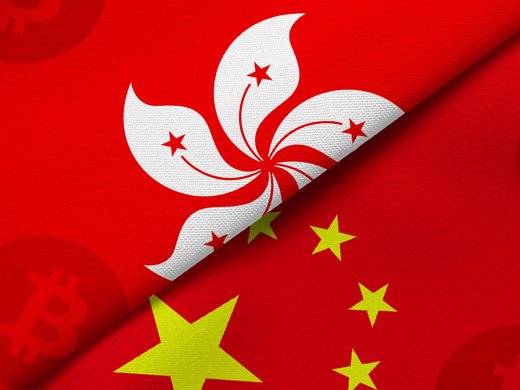The previous post outlined the theoretical argument for some form of public policy intervention to help support timely, orderly sovereign debt restructuring by helping to “complete” financial markets. To recap: the absence of complete state-contingent contracts and the inability of governments to credibly commit to sharing upside outcomes prevents governments from asking their creditors to reduce the value of their claims in bad ("restructuring") states in return for higher returns in good (“upside”) states; this results in debt restructuring negotiations that resemble wars of attrition in which one party eventually wins, but in which both are worse off.
I argued that any intervention by the International Financial Institutions (IFIs) designed to improve upon the status quo should satisfy three conditions:
- First, no risk transfer — risk should not be passed to the balance sheet of the IFI (strong form), or without adequate compensation (weak form);
- Second, adequate risk mitigation and management — there has to be sufficient controls that cap and contain the risks associated with intervention consistent with the weak form of the first condition; and
- Third, respect principles of inter-creditor equity/market efficiency.
What are possible public policy instruments to facilitate a better, Pareto-improving outcome?
Two options are frequently cited. The first is a loan from the official sector that is used to buy distressed sovereign debt on the secondary market. The second is a loan guarantee offered in the context of exchange of old debt for new, restructured debt offering a lower net present value (NPV). The idea behind the guarantee is that it could “grease the wheels” of debt restructuring by providing some assurance to creditors taking a “haircut,” or NPV reduction, that the restructured debt has less risk attached to it. Providing this assurance could induce creditors to take a larger haircut, either in the form of a greater reduction in the face value of the claim or lower coupon rate on the instrument.
At first blush, a loan seems like a great idea: you lend to the country, the country then goes out and buys up distressed debt at deep discounts. Say the debt is trading at 50 cents to the dollar. One dollar of new debt extinguishes two dollars (face value) of old debt. What could be wrong with that?
Appearances can be deceiving.
If debt is trading at a discount, it is because the impersonal “market” thinks that the government cannot, or will not service its debt. If the former, the country is attempting to evade the bonding role of debt and should not, under any circumstances, receive succor from the international community. But if it is the latter, the debt is “unsustainable” (in the sense that government’s claim on the discounted stream of current and future output is less than the stock of outstanding debt—in economics jargon: violation of an inter-temporal solvency constraint). In this case, the country is insolvent—notwithstanding the famous quip made by Walter Wriston, the legendary Chairman of Citibank in the 1970s (i.e., just before the debt crisis of the 1980s that very nearly brought down the global banking system), that “governments don’t go bankrupt”—and the stock of debt has to be reduced. That is what happens at the domestic level when firms and individuals go to bankruptcy court. Giving more debt to a bankrupt is never a good idea: that is a Ponzi scheme; if adding debt on top of debt is defensible, we would never have had the crisis of the past five years.
Moreover, adding debt in the case of insolvency has even more noxious effects. To begin, it violates the three key conditions that I think should guide public policy intervention in cases like this.
Adding debt would, I think, result in a transfer of risk from the private bondholders who held the debt in full knowledge that it was more risky, say, than US Treasuries, err, Canadian long bonds. If that is not the case, why were they collecting higher interest rates? If the underlying assumptions on which their risk-return tradeoff decision was based turn out to be overly optimistic or overtaken by external events (i.e., the worst global recession since the Great Depression) they should bear the risk. “But,” say you, “buying up debt at distressed prices entails risk bearing by the investors who get a fraction of their face value.”
Well, yes, and no. Although the debt initially trades at a discount of 50%, once the government starts its buy back operations, the market value goes up. Why? The answer is simple: with less debt outstanding, the probability of repayment and recovery of value for remaining debt holders rises. That expectation is factored, or “priced” into market price. In effect, the buyback operation entails a transfer from the citizens of the country to the bondholders who decide not to tender in the buyback operation. In other words, these bondholders get a free lunch paid for by the taxpayers, who have to continue servicing the remaining stock of private debt and now have a higher stock of debt out to the official sector. This violates condition #1 above.
But wait, it gets worse (at least potentially). This “buyback boondoggle” (as it is referred to in the economics literature) does not go unnoticed by the government. The only way that a buyback can be beneficial to the government is if the private sector “overshoots” from excessive optimism when the bonds were issued to excessive pessimism during the debt crisis and under-estimate the government’s ability to service the debt. While this effect is possible (some might say, likely), it raises the disturbing possibility that it creates an incentive for governments planning to undertake a buyback operation to fuel this “negativity” so that markets really overshoot and drive the secondary market price for the debt to, say, 25 cents. In this case, the government could buy back debt until the secondary market price is at 50 cents and still be better off with a debt buyback. Creating such distorted incentives is contrary to condition #3 above.
At the same time, there is a potential negative effect on the efficiency of international debt markets by virtue of the effect that a loan from the Bank is implicitly held to be senior to private debt. If there is a subsequent default because the buyback provides insufficient debt relief, this preferred creditor status has the effect of subordinating private creditors. By way of our hypothetical example, rather than getting 50 cents on the dollar, private creditors would only get, say, 25 cents on the dollar. This is not conducive to the promotion of well-functioning international capital markets for the efficient allocation and bearing of risk.
Final point: if the guarantee is exercised, the amount outstanding converts to a loan. This mitigates risk, consistent with condition #2.
Part III, which considers the feasibility of a guarantee, to follow…


